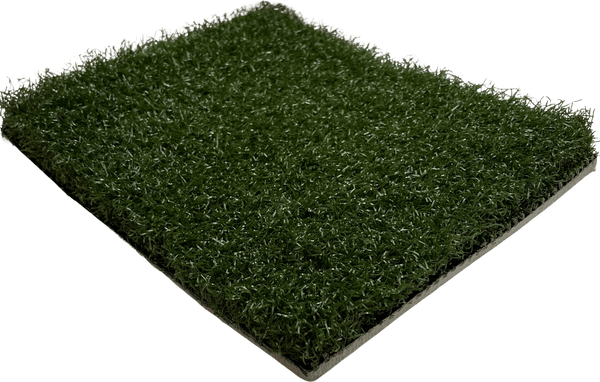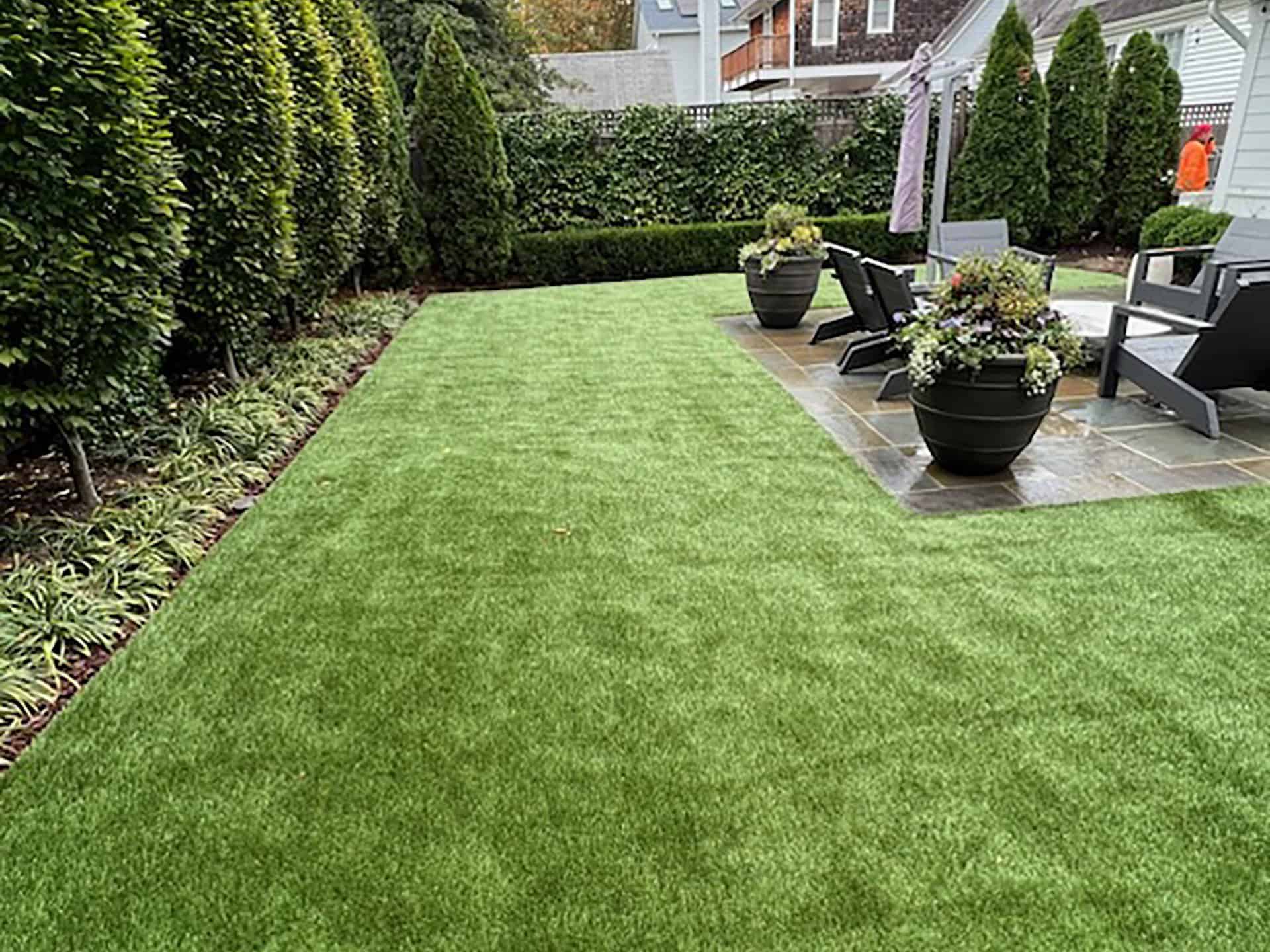Delve Into the Environmental Benefits of Opting for Synthetic Grass Solutions
The adoption of synthetic lawn options provides an engaging chance to attend to pressing ecological difficulties. By considerably lowering water usage and minimizing the application of harmful chemicals, these choices not only advertise sustainable landscape design however also secure local ecological communities. Additionally, the lower carbon impact connected with reduced upkeep activities adds to an extra lasting strategy to land administration. The effects of these advantages extend past simple preservation efforts, increasing questions regarding their lasting impact on habitat preservation and total eco-friendly balance. Exploring these measurements discloses an intricate interplay worth thinking about.
Water Conservation Perks
Among one of the most considerable advantages of synthetic grass is its ability to conserve water. Traditional grass yards call for considerable irrigation, especially in areas vulnerable to dry spell or water limitations. In contrast, synthetic grass does not require watering, dramatically minimizing the total need for water resources. This function is particularly beneficial in deserts where water scarcity is a pressing issue.
By removing the need for normal watering, synthetic lawn adds to lasting landscape techniques and helps minimize the environmental effect of too much water consumption. In addition, the conservation of water encompasses the reduction of runoff, which can cause soil erosion and river pollution.
In addition, the installation of man-made lawn allows property owners and districts to allot water resources a lot more successfully, concentrating on essential uses such as alcohol consumption water and agriculture. The change towards synthetic grass not just advertises accountable water usage yet additionally straightens with more comprehensive environmental objectives intended at preserving natural resources.
As communities progressively prioritize sustainability, the water conservation benefits of synthetic grass provide an engaging situation for its fostering in industrial and property landscaping jobs.
Minimized Chemical Use
The shift to man-made grass substantially reduces the dependence on chemical therapies typically utilized in natural grass maintenance. Traditional lawn monitoring typically entails the application of herbicides, plant foods, and pesticides to promote growth and control parasites. These chemicals can present dangers to human health, neighborhood wild animals, and the environment, adding to dirt and water contamination.
In contrast, man-made turf gets rid of the demand for these damaging substances. By lessening the launch of synthetic substances right into the community, fabricated turf advertises much healthier soil and water systems.
Additionally, the absence of chemical overflow linked with synthetic grass installations assists shield local rivers from air pollution, supporting water life and keeping biodiversity. Arizona turf. As communities significantly focus on sustainable practices, going with artificial turf offers a sensible solution that aligns with ecological preservation objectives. Through this change, homeowner can appreciate lush green spaces without jeopardizing environmental health and wellness, leading the way for an extra lasting future
Reduced Carbon Impact

In addition, the installment of synthetic grass can lead to considerable water preservation. All-natural yards call for substantial quantities of water for watering, which not just contributes to the carbon impact related to water removal and therapy yet additionally pressures neighborhood water sources. In comparison, synthetic grass needs minimal upkeep, calling for no watering, thereby substantially minimizing water usage and its connected energy expenses.
Additionally, the longevity of synthetic grass adds to its lower carbon influence. With a life expectancy of as much as 15 years or more, the need for frequent substitutes is reduced, leading to less waste and reduced power usage in manufacturing and throwing away standard turf alternatives. Generally, synthetic grass presents a sustainable choice for eco aware landscaping.
Environment Preservation
Environment conservation is a critical factor to consider in the debate over landscape design options, particularly when contrasting synthetic grass to all-natural turf. Natural lawn lawns often call for substantial maintenance, consisting of using herbicides, chemicals, and fertilizers, which can detrimentally affect regional ecosystems. These chemicals can seep into the soil and rivers, harming indigenous flora and fauna and interfering with regional environments.
In contrast, synthetic grass provides a possibility to decrease the environmental impact of landscaping. By deciding for artificial turf, homeowners can reduce the disturbance of natural check this environments related to typical yard treatment techniques. Synthetic grass gets rid of the need for harmful chemicals, thereby securing neighboring wild animals and maintaining the stability of bordering ecological communities. The setup of man-made grass can lead to the conversion of previous lawn locations right into even more biodiverse landscapes, such as pollinator yards or indigenous plant locations, which can sustain regional wild animals.
Inevitably, the shift to synthetic grass not only preserves water and lowers upkeep efforts but also cultivates a much more unified partnership between human tasks and the all-natural setting, promoting habitat preservation while doing so.
Long-Term Sustainability
Lasting sustainability is an essential consider reviewing the benefits of synthetic grass over conventional turf yards. One of the most substantial benefits of artificial lawn is its toughness; it can last as much as 15-20 years with marginal maintenance, whereas all-natural lawn requires constant reseeding and replacement. This long life decreases the demand for continuous sources, such as water, fertilizers, and chemicals, which are vital for maintaining a healthy and balanced explanation grass yard.
Additionally, man-made turf adds to a reduction in carbon discharges related to yard treatment equipment. Standard grass frequently need gas-powered lawn mowers, trimmers, and blowers, all of which add to air pollution. Artificial turf companies phoenix. On the other hand, synthetic grass removes the need for such devices, advertising a cleaner environment
Additionally, the manufacturing of synthetic grass significantly utilizes recycled materials, boosting its sustainability account. As manufacturers embrace eco-friendly methods, the ecological impact of artificial turf continues to reduce.

Verdict
The adoption of synthetic grass services offers considerable ecological advantages, consisting of substantial water preservation, decreased dependence on dangerous chemicals, and a lower carbon footprint. Artificial grass help in preserving natural habitats by lessening land disruption and promoting long-lasting sustainability via the use of long lasting products. Collectively, these elements highlight the possibility of synthetic grass to add favorably to environmental health and wellness and supply a viable option to standard landscape design practices in a progressively resource-conscious globe.
In comparison, fabricated turf does not need watering, substantially lowering the overall demand for water resources. By reducing the release of synthetic substances right into the environment, artificial grass advertises much healthier soil and water systems.
In addition, the installation of artificial lawn can result in considerable water conservation. In comparison, artificial turf needs minimal maintenance, requiring no watering, thus considerably minimizing water usage and its connected energy expenses.
